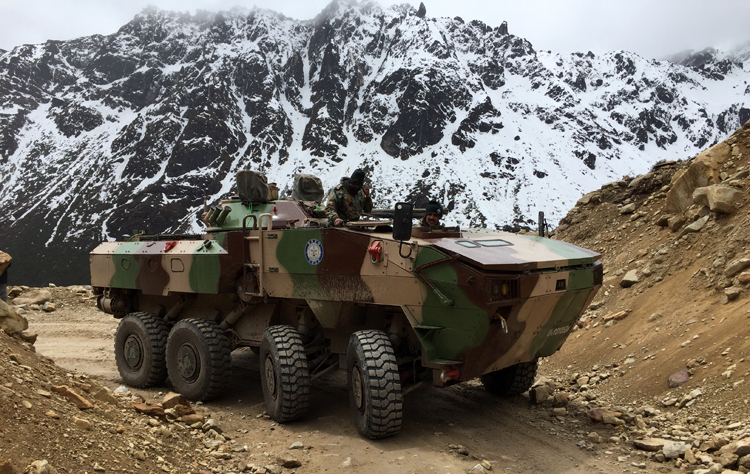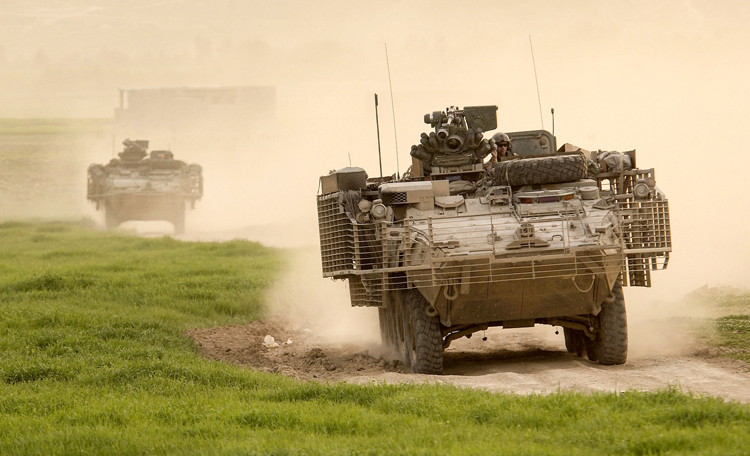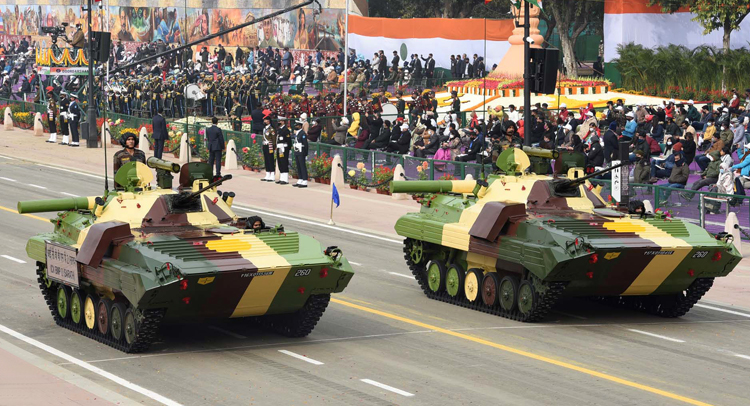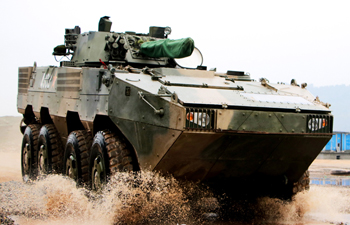INDIAN ARMED FORCES CHIEFS ON OUR RELENTLESS AND FOCUSED PUBLISHING EFFORTS

The insightful articles, inspiring narrations and analytical perspectives presented by the Editorial Team, establish an alluring connect with the reader. My compliments and best wishes to SP Guide Publications.

"Over the past 60 years, the growth of SP Guide Publications has mirrored the rising stature of Indian Navy. Its well-researched and informative magazines on Defence and Aerospace sector have served to shape an educated opinion of our military personnel, policy makers and the public alike. I wish SP's Publication team continued success, fair winds and following seas in all future endeavour!"

Since, its inception in 1964, SP Guide Publications has consistently demonstrated commitment to high-quality journalism in the aerospace and defence sectors, earning a well-deserved reputation as Asia's largest media house in this domain. I wish SP Guide Publications continued success in its pursuit of excellence.
- Operation Sindoor: Resolute yet Restrained
- India’s Operation Sindoor Sends a Clear Message to Terror and the World – ‘ZERO TOLERANCE’
- Japan and India set forth a defence cooperation consultancy framework, talks on tank and jet engines
- Terrorist Attack in Pahalgam in Kashmir: Unfolding a long surgical war against PAK
- Lt General Pratik Sharma takes over Command of Indian Army's Northern Command
Morocco Boosts Indian Defence Exports
Tata is set to establish India's first overseas WhAP production plant in Morocco, with an annual capacity of 100 units, positioning India as a reliable defence supplier to other Middle East and African countries
 |
The Author is Former Director General of Information Systems and A Special Forces Veteran, Indian Army |

The Indian Army has an existing fleet of over 2,000 Russian-origin BMP-II vehicles which will need to be replaced as and when they complete their operational life. It was reported in these columns earlier that India and the US are looking at equipping the Indian Army with the American Stryker Infantry Combat Vehicle (ICV) in three phases –
- Limited off-the-shelf purchase of Stryker ICVS under America's foreign military sales (FMS) programme;
- Joint production in India, and;
- Co-development of futuristic armoured versions of Stryker ICV.
America has been hard-selling the Stryker ICV to India since its first offer in 2000. The US deployed Stryker ICVs during the Indo-US joint Exercise 'Yudh Abhyas-2009'. There was obvious political pressure as well with the US Secretary of Defence Lloyd J. Austin cited the "co-production of armoured vehicles with India" as yet another indicator of the upward trajectory in the bilateral defence partnership during the Shangri La dialogue in June 2024. In the same month the US National Security Adviser Jake Sullivan, during his visit to India on June 17-18 for reviewing the 'Initiative on Critical and Emerging Technologies (iCET), also spoke of the Stryker co-production.
The Indian Army has an existing fleet of over 2,000 Russian-origin BMP-II vehicles, which will need to be replaced as they complete their operational life.
The Stryker is more than two-decades old and its vulnerabilities witnessed in operations are quite a few. These include insufficient armour, wheeled design causing maintenance problem with mud clogging the engine, improvised explosive devices (IEDs) ripping through the flat underbelly, malfunctioning computer system and limited off-road mobility. Troops called it "Kevlar Coffin". According to some analysts, Stryker is not designed for direct assault and engaging enemy armour.

The Stryker ICV will need to be customised and technologically configured for the Indian terrain, including operations in high-altitude areas. Moreover, it is not amphibious, which the Indian Army wants, making it amphibious would imply a major overhaul. Also, a high level of indigenisation and transfer of technology (ToT) should include "critical" technologies to the Indian co-production partner.
The Stryker deal was being viewed as a setback to the readily available indigenous Wheeled Armoured Platform (WhAP), also called TATA 'Kestrel', jointly produced by Tata Advanced Systems and the Defence Research and Development Organisation (DRDO), first showcased during Defexpo 2014 in Delhi. WhAP is 8x8 amphibious ICV that has performed well in high-altitude trials. WhAP development was taken up to provide common platform for wheeled APC, ICV with 30mm cannon, Light Tank with 105mm main gun, command post vehicle, ambulance, special purpose platform, 120mm mortar carrier and CBRN Vehicle.
The Stryker deal is seen as a setback to India's indigenous Wheeled Armoured Platform (WhAP), also called TATA 'Kestrel', which has performed well in high-altitude trials and is designed for modern warfare.
WhAP is designed for modern warfare keeping in mind crew survivability, protection against small arms fire, mobility and protection against concealed explosives. It is indigenous with an imported engine. It is equipped with Kongsberg 30mm cannon, which can be fired remotely. It can fire high-explosive incendiary (HEI), armour-piercing incendiary (API), and armour-piercing fin-stabilised discarding sabot tracer (APFSDS-T) rounds with a 30mm caliber. It has an effective range of 3,000m. The 40mm grenade launchers are used as a secondary weapon. It can accommodate anti-tank missiles or a 12.7mm machine gun.

In October 2019, the MoD cleared production of WhAP and export to friendly countries. The Indian Army reportedly plans to acquire 200 WhAP. The first batch of WhAP was inducted into the Indian Army on April 12, 2022. The ITBP is also being equipped with WhAP. WhAP can carry 2+9 soldiers compared to 3+8 by Stryker. WhAP's power-to-weight ratio is 25, compared to Stryker's 17.24. WhAP weighs 24.5 tonnes compared to 20.3 tonne weight of Stryker, but with better power to weight ratio the WhAP is better suited for difficult terrain.
Tata Advanced Systems recently secured a deal with Morocco to supply 400 WhAP units, marking a major success for India in the defence market, as the WhAP was chosen over China's NORINCO Type 08.

The latest news is that Tata Advanced Systems has scored a major victory in Morocco, where the WhAP has come first in Morocco's quest for procuring ICVs. Significantly, the WhAP has even beaten the Type 08 (ZBL-08 or VN-1 export version) ICV offered by NORINCO of China. NORINCO has had a presence in Morocco since 2001. In the fierce competition, the Morocco Land Forces found the WhAP superior and far more reliable, plus doubts about China's after sales service. Morocco was so impressed that the initial supposed order of 150 WhAP units was jacked up to 400 units.
The WhAP deal comes as a turning point for defence procurement by African countries who have traditionally relied on China. Tata Advanced Systems is set to establish India's first overseas WhAP armoured IC plant in Morocco with an annual production pegged at 100 WhAP units. The establishment of a WhAP plant in Morocco provides a unique opportunity for India, a strategically defence production location for exporting WhAP to other Middle East and African countries as a reliable defence supplier.





